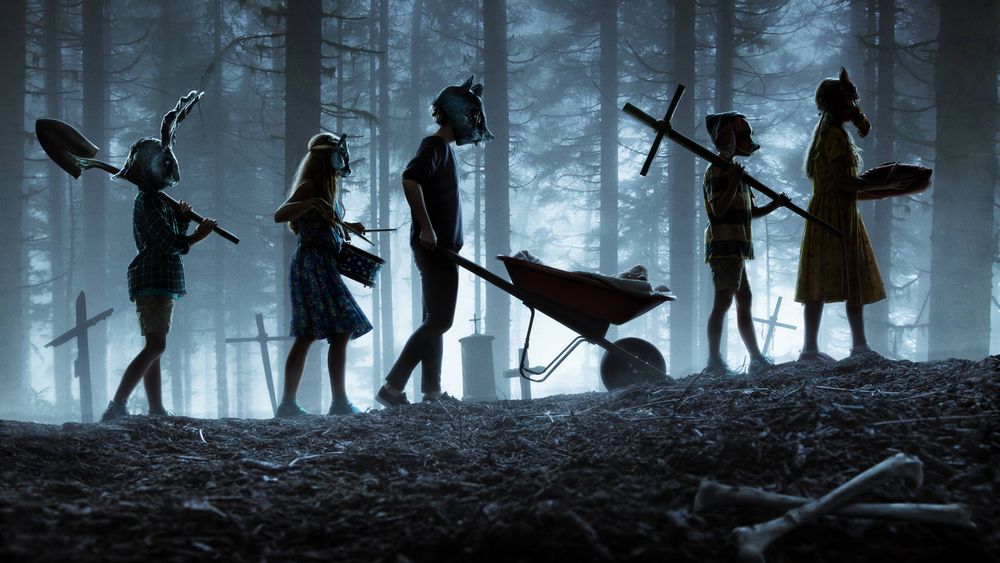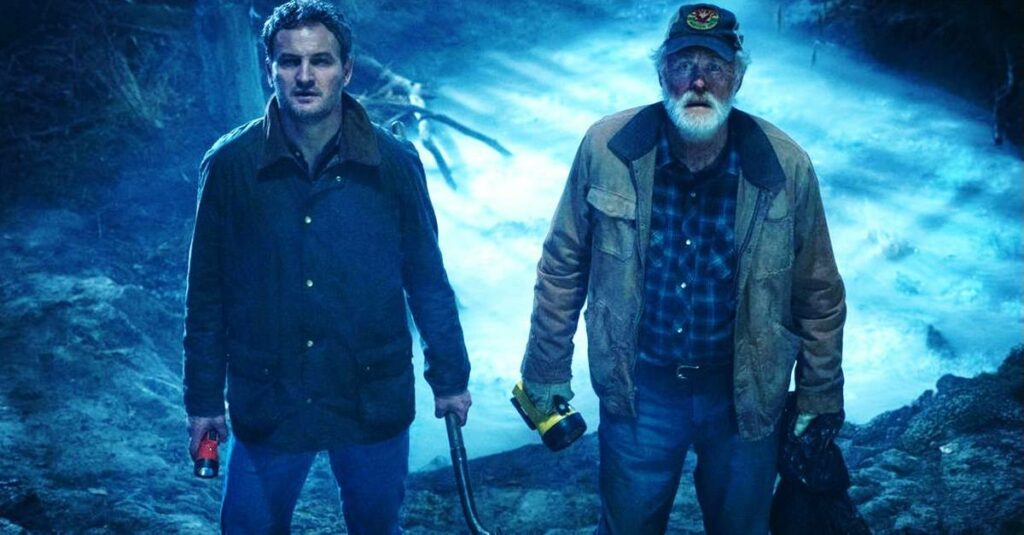If we haven’t OD’d on superhero movies by now, it’s unlikely that we’ll run out of patience for the nostalgia fuel that is the Stephen King adaptation. The latest comes from Starry Eyes directors Kevin Kölsch and Dennis Widmyer and it’s a tale we’ve seen before: King’s 1983 novel Pet Sematary. Mary Lambert’s 1989 film haunted many childhoods by bringing the book’s themes of grief and despair to the big screen, telling the story of Louis Creed, a man who suffers a terrible loss and tries to best death, only to put his entire world in jeopardy after he messes with humanity’s rules. While Kölsch and Widmyer make a solid attempt on this version 2.0, the result is a mixed bag that never quite reaches the bonkers heights it aims for.
Louis Creed (Jason Clarke) and his wife Rachel (Amy Seimetz) move to the sleepy town of Ludlow, Maine with their two children Ellie (Jeté Laurence) and Gage (Hugo Lavoie), and their doomed kitty, Church. While it’s a quiet new life for the Creeds, the influx of semi-trucks whizzing down their busy main road is an omen of what’s to come, and if you’ve read the book or have seen the original, you know the cat and a kid are gonna bite it.
Neighbor Jud (the underutilized but effective John Lithgow) finds Church dead from an apparent hit and run, so he lets Louis in on the secret to new life—a plot of land behind an old pet cemetery that was once used by the Micmac Indians. It’s a piece of land that has the power to revive the dead. And while Church does return to the family, sparing the parents the hard-pressed task of shattering Ellie’s heart, he’s changed…a ferocious zombie-kitty with piercing eyes and ratty fur. A look that can only be achieved if you’ve been dead and buried for days.
After attempting to dump the demon cat far away from the family home, the cat comes back with a vengeance. And here is where we mention that Pet Sematary is a foreboding story about not learning one’s goddamn lesson. When Church resurfaces on the day of Ellie’s birthday party, one of the Creed children spots him in the road and runs toward him, unaware of yet another semi-truck blowing down the road. The child is struck and dies a death that should’ve been bloodier, gnarlier, and more disturbing—and don’t give me that “but it’s a child!” bullshit. Take that up with King. (Insert a Joe Bob Briggs-style rant here about how more children should die in horror films. Bless you, Hereditary.) Louis, blind to the fact that his cat has become a monster, lets his grief run wild and buries the child in the burial ground knowing damn well that he’s rolling dice by doing so. And that’s when the Creed family’s trouble really starts.
While Kölsch and Widmyer throw some clever wrenches into the plot, including one major switcheroo that the trailer completely ruined, this return to the Sematary feels like well-trodden territory. While the look of the cemetery and the burial ground was dark and creepy, the story remains too similar to its previous iterations, and oddly enough, left me wondering if my experience would’ve been different had that huge surprise actually had been a surprise. (I really wonder what the case was for spoiling that huge twist. Producer interference? Marketing ploy? Talk about taking the wind out of the directors’ sails.) There’s nothing quite daring or bold enough to really set the stage for some creative kills or inventive storytelling. It simply is…Pet Sematary. While there’s nothing inherently “bad” about it, it feels superfluous, just another King story re-told because, well, King adaptations are having a moment.
There are some positives. Seimetz’s Rachel has far more to do this time around than in Lambert’s film where the character was more or less glorified wallpaper. Screenwriter Jeff Buhler (The Midnight Meat Train, The Prodigy) dives much further into Rachel’s trauma she suffered as a result of her sister’s death, allowing the directors to dip into some crunchy, morphing body horror that won the gold for the most effective gross-outs of the film. Rachel’s inability to deal or even speak about death adds a thick emotional layer to what she’ll later experience with the death of her child, and Seimetz handles the material well, accentuating the themes of loss and grief throughout. Seimetz’s performance really elevates the entire production.
Fans of the book will also be happy to hear that one very important character, an element skipped over by Lambert’s film, makes the cut in the remake: the Wendigo. Including the Wendigo is probably the best choice and most intriguing aspect here. Not only is it such a crucial part of this book and other King works, but it adds a bit of explanation and shrouds of mystery to the powerful grounds Louis abuses. In the book, the Wendigo’s presence is deeply seated in Ludlow’s history, harking back to when the land was inhabited and later abandoned by Native Americans. The Wendigo cursed the land and freaked the town’s residents out once they discovered its supernatural power. While the original settlers bolted, the Wendigo stayed, lurking over the land it soured. In the new film, the Wendigo more of a behind-the-scenes presence—though Louis and viewers do get a glimpse of it. I could’ve used more Wendigo lore, for sure, but we’ll take what we can get for the sake of runtime.
Pet Sematary is not a total failure but it does fall short of achieving the brazen fury we saw in the filmmakers’ previous work. There were chances for bigger swings and these moments become missed opportunities that could’ve cranked the third act up to 11. Though the source material is respected, which is good and fine, this redux version is eerily safe for a movie about zombified family members, one of King’s bleakest stories of all time. Like the people and pets it reanimates, maybe this Sematary should’ve stayed buried. Grade: C





They show WAY too much in the trailer, is all I’m saying.
It’s the biggest twist in the movie, too, which leaves nothing nearly as shocking or interesting to grasp on to. Eh.